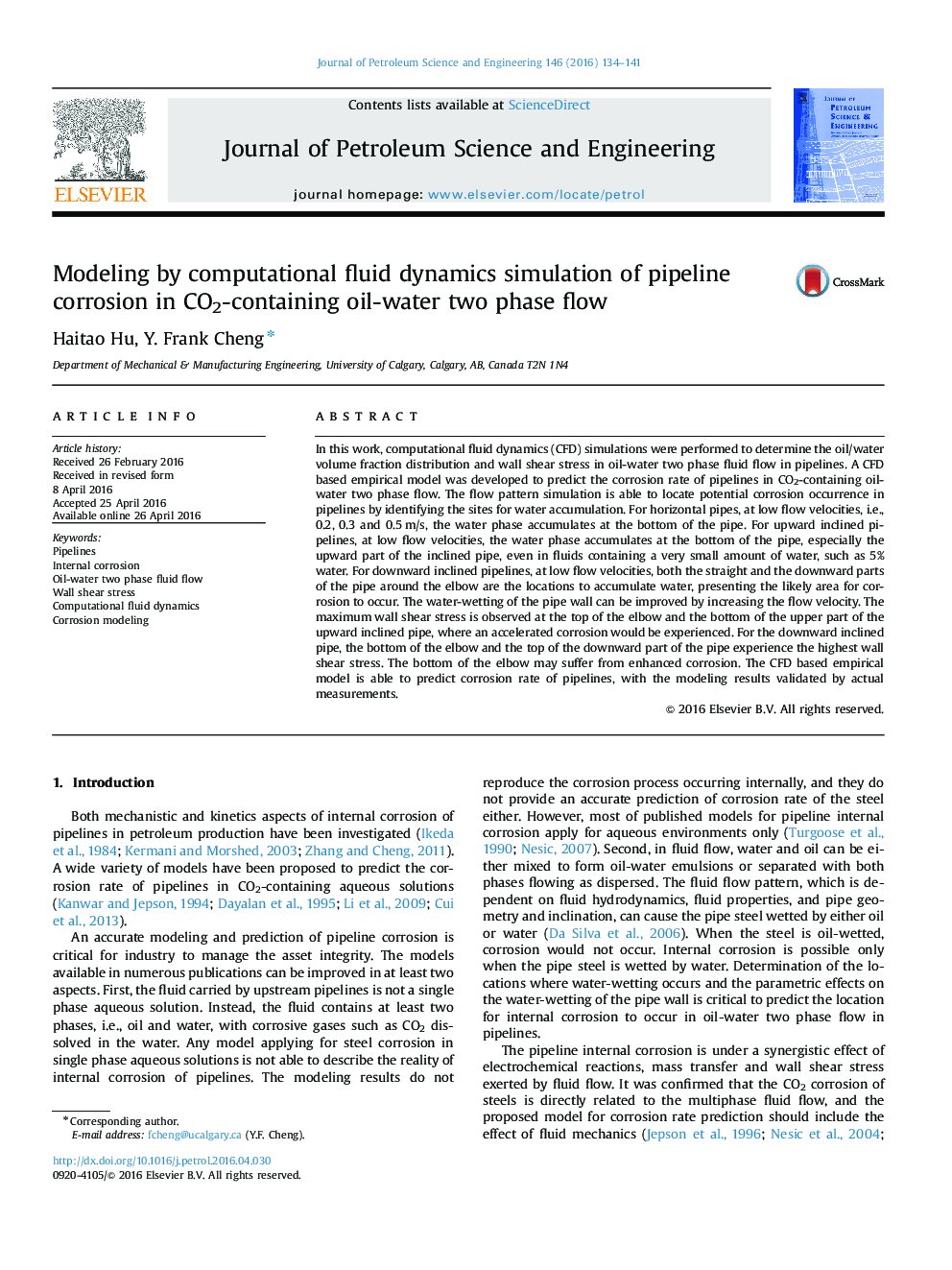| کد مقاله | کد نشریه | سال انتشار | مقاله انگلیسی | نسخه تمام متن |
|---|---|---|---|---|
| 1754495 | 1522795 | 2016 | 8 صفحه PDF | دانلود رایگان |
• Determine the effects of oil content and pipe inclination on flow pattern.
• Develop a CFD-based model to predict pipeline corrosion in oil-water fluid flow.
• Validate the modeling results by actual corrosion measurements.
In this work, computational fluid dynamics (CFD) simulations were performed to determine the oil/water volume fraction distribution and wall shear stress in oil-water two phase fluid flow in pipelines. A CFD based empirical model was developed to predict the corrosion rate of pipelines in CO2-containing oil-water two phase flow. The flow pattern simulation is able to locate potential corrosion occurrence in pipelines by identifying the sites for water accumulation. For horizontal pipes, at low flow velocities, i.e., 0.2, 0.3 and 0.5 m/s, the water phase accumulates at the bottom of the pipe. For upward inclined pipelines, at low flow velocities, the water phase accumulates at the bottom of the pipe, especially the upward part of the inclined pipe, even in fluids containing a very small amount of water, such as 5% water. For downward inclined pipelines, at low flow velocities, both the straight and the downward parts of the pipe around the elbow are the locations to accumulate water, presenting the likely area for corrosion to occur. The water-wetting of the pipe wall can be improved by increasing the flow velocity. The maximum wall shear stress is observed at the top of the elbow and the bottom of the upper part of the upward inclined pipe, where an accelerated corrosion would be experienced. For the downward inclined pipe, the bottom of the elbow and the top of the downward part of the pipe experience the highest wall shear stress. The bottom of the elbow may suffer from enhanced corrosion. The CFD based empirical model is able to predict corrosion rate of pipelines, with the modeling results validated by actual measurements.
Journal: Journal of Petroleum Science and Engineering - Volume 146, October 2016, Pages 134–141
